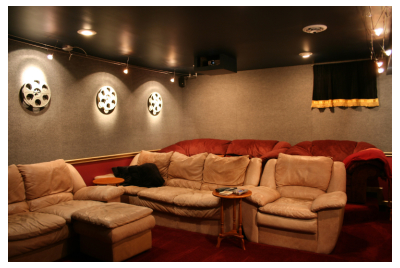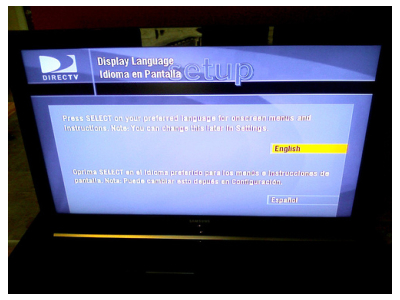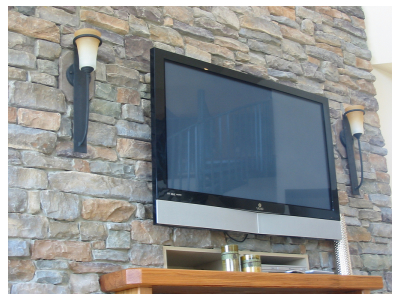Research Starts At Home
The hardest part to getting the answers you need for buying the right HDTV is figuring out the questions. You may think of the choice of a HDTV being based on the technology in the TV and it's footprint in your living room. However, before you even think about the TV you need to consider factors about the viewing environment beyond floor space for your new TV.
Ambient Lighting
The first step in matching a HDTV to its environment is to consider lighting. Both direct view and rear projection displays tend to perform well in a variety of lighting conditions, although rear projectors may appear washed out in very bright rooms. Front projectors, on the other hand, require lower light ambient light levels to deliver a quality picture. As a general rule, if you want to use a front projector you'll need a relatively dark room, or at least one you can darken when necessary. If the screen is opposite a bay window with sunlight streaming in you'll have viewing problems if you can't block it very effectively.


| * If possible examine the picture on a HDTV in an environment where the lighting can be adjusted. The room you'll be watching your HDTV in will likely have a variety of possible lighting conditions. Try to simulate as many of them as possible to see how it affects the HDTV's picture. |

Viewing Angle
Sometimes the difference between a good or just fair viewing experience is watching from an angle where you get the full benefit of a HDTV's picture. Technology like plasma can be viewed from nearly any angle, while many LCD displays suffer from a relatively narrow viewing angle. Newer models have largely addressed the viewing angle problem from side to side, although vertical position (standing or sitting on the floor for example) can still be an issue. If you're watching an LCD screen from the floor (below the screen) it may look different than viewing from a chair at screen level. DLP TVs will have a narrower viewing angle than plasma as well.
Viewing Distance
Regardless of whay type of HDTV you're planning to buy, the distance from the screen to the viewer should be one of your first considerations. Not only does viewing distance help determine how immersive your viewing experience is, combined with screen size it can also help you decide whether you'll get any advantage from a higher resolution (1080i or 1080p) HDTV. Despite marketing that suggests more is always better, as we'll discuss later in this buying guide higher resolution doesn't always equal more visible detail.
| * When evaluating a HDTV try to watch from various distances and viewing angles similar to your viewing environment. Make sure to combine this with the lighting test to fully evaluate the TV under the correct conditions. |
Footprint
The amount of space required for a HDTV depends on a combination of the screen size and technology behind it. At one extreme front projectors have very small projection units and the thinnest possible screens, which may also be portable and easily stored completely out of sight and out of the way. At the other, DLPs will need some permanent floor spce and are by far the thickest HD displays. In between the two extremes are flat panel LCD and plasma displays that may be set on a stand or hung on a wall.


| * In addition to the cost of the TV, a wall mounted flat panel requires a mounting kit. If your HDTV isn't wall mounted you may need some sort of stand for it. If you're upgrading from an analog TV you may have one, but it may not be wide enough. Make sure you're prepared for any additional expenses that might go along with your new TV. |






